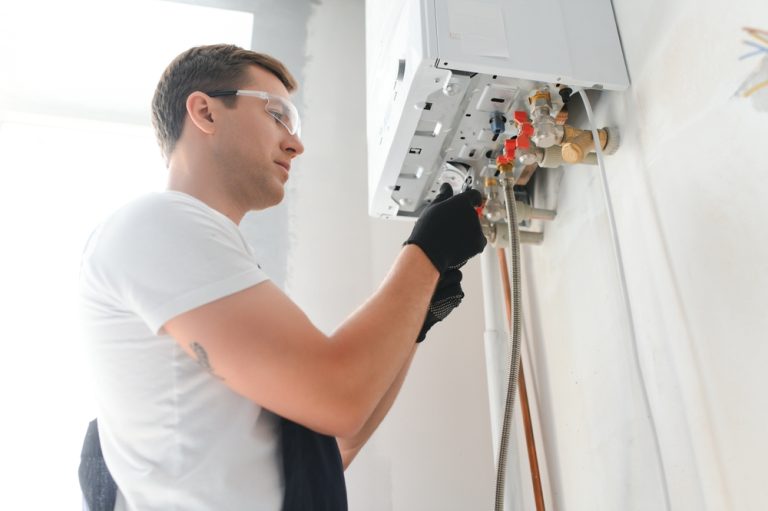5 steps for getting your water heater ready for winter
The need for a reliable and efficient water heater increases with the coming of winter, and demand for hot water also peaks during the winter months as people seek warmth and comfort. As temperatures drop, it is essential to ensure that your water heater is ready for the colder Season. For an efficient and constant warm water supply in your home, It is important to take proper care of your geyser during the winter season. By following these 5 simple steps from Star Water Heater Repair, you can get your water heater system ready for the Cold Weather season.
Preparing Your Water Heater for Winter in 5 Simple Steps:
1. Insulate both your hot water tank and the connecting pipes
If your unit is not insulated, it can lead to heat loss, increasing energy costs when reheating water. Older heaters may not have built-in insulation, so additional measures are needed. It not only maintains heat, it also prevents pipes from freezing or bursting. A tank cover adds an extra layer of protection, sized correctly by a professional technician from Star Water Heater Repair. Insulating the tank and connecting pipes is crucial, especially if the heater is near cold areas like basements or garages. Special wraps for the Water tank trap heat, reducing the heater’s workload. Pipes can be insulated with sleeves, wraps, or heat tape, though professional application is recommended for safety.
2. Flushing Out Sediment Build-Up
Regular maintenance of your hot water tank, including draining and flushing it one to two times annually, is essential to remove sediment and calcium build-up. This reduced hot water efficiency and output. Attempting to flush the tank independently is risky due to scalding water temperatures and possible injury or damage. A skilled technician should inspect the tank regularly to monitor the level of sediment and clearing it will extend the life of the tank, prevent rust, and avoid drain valve clogs. By following these repair and maintenance instructions, your water heater will be ready for the challenges of cold weather.
3. Monitoring Temperature and Pressure Levels
If you experience cold water issues during winter, your boiler may be struggling to heat enough water. Ensure your water tank temperature is set within the range of 120 to 140 degrees Fahrenheit, as this enhances energy efficiency while maintaining hot water availability. Typical default settings are 140 degrees, but reducing this to 120 degrees can save energy. Additionally, test the pressure valve by lifting the lever to ensure proper function; Any signs of pressure or water leakage require immediate professional attention.
4. Ensure the anode rod is in good condition
The anode rod is a crucial component of your water heater, The purpose of the anode rod is to protect the tank from corrosion and rust. to protect the tank from rusting. Alongside monitoring pressure and temperature, regularly inspect this rod, typically lasting about five years. If you see limescale or rust on the anode rod, or if it’s broken call a Certified technician for replacement. Found inside the water tank, the anode rod is pivotal in preventing internal rusting, thereby extending the heater’s lifespan. Regular inspection and timely replacement of the anode rod are vital for ensuring the continued functionality and durability of your water heater.
5. Draining Your Water Heater Before Winter Vacations
Any remaining water inside may freeze and damage internal components. Ensure that the heater is properly drained, especially if you’re going away for the holidays or leaving your hot water tank for an extended period in winter. Suggesting installing flood protection systems, usually located close to the boiler, provides additional protection. They are hard-wired to the electrical system with a battery backup and include a sensor in the heater pan. If water is detected, the system shuts off the supply and sounds an alarm. During long periods of absence in winter, These actions are essential to protect your property and maintain the condition of your hot water system.
Pros and cons
| Ensures reliable hot water supply | Risk of scalding if temperature is set too high |
| Reduces energy costs | Possibility of water leakage if the pressure valve malfunctions |
| Prevents freezing and bursting pipes | Additional cost for professional installation of insulation |
| Extends lifespan of water heater | Regular maintenance is required for optimal performance |
| Protects against corrosion and rust | Possibility for damage if the anode rod is not replaced timely |
| Provides peace of mind during winter | Draining the water heater may be inconvenient before leaving |
| Helps prevent floods and water damage | Installation of flood protection systems adds expense |
| Regular maintenance ensures efficiency | Periodic flushing of sediment may be time-consuming |
| A professional inspection ensures the safety | Investment in insulation and flood protection may not be immediately recouped |
| Easy to implement preventive measures | Temperature and pressure monitoring require attention and knowledge |
Conclusion
Implementing these steps will ensure your water heater remains in excellent condition during the winter months. If you need help with any of these services or think it’s time for a new water heater, the skilled and professional water heater technicians at Star Water Heater Repair Cleaning are here to help. Contact us today to schedule service and receive expert assistance with your water heater needs in any weather conditions.





